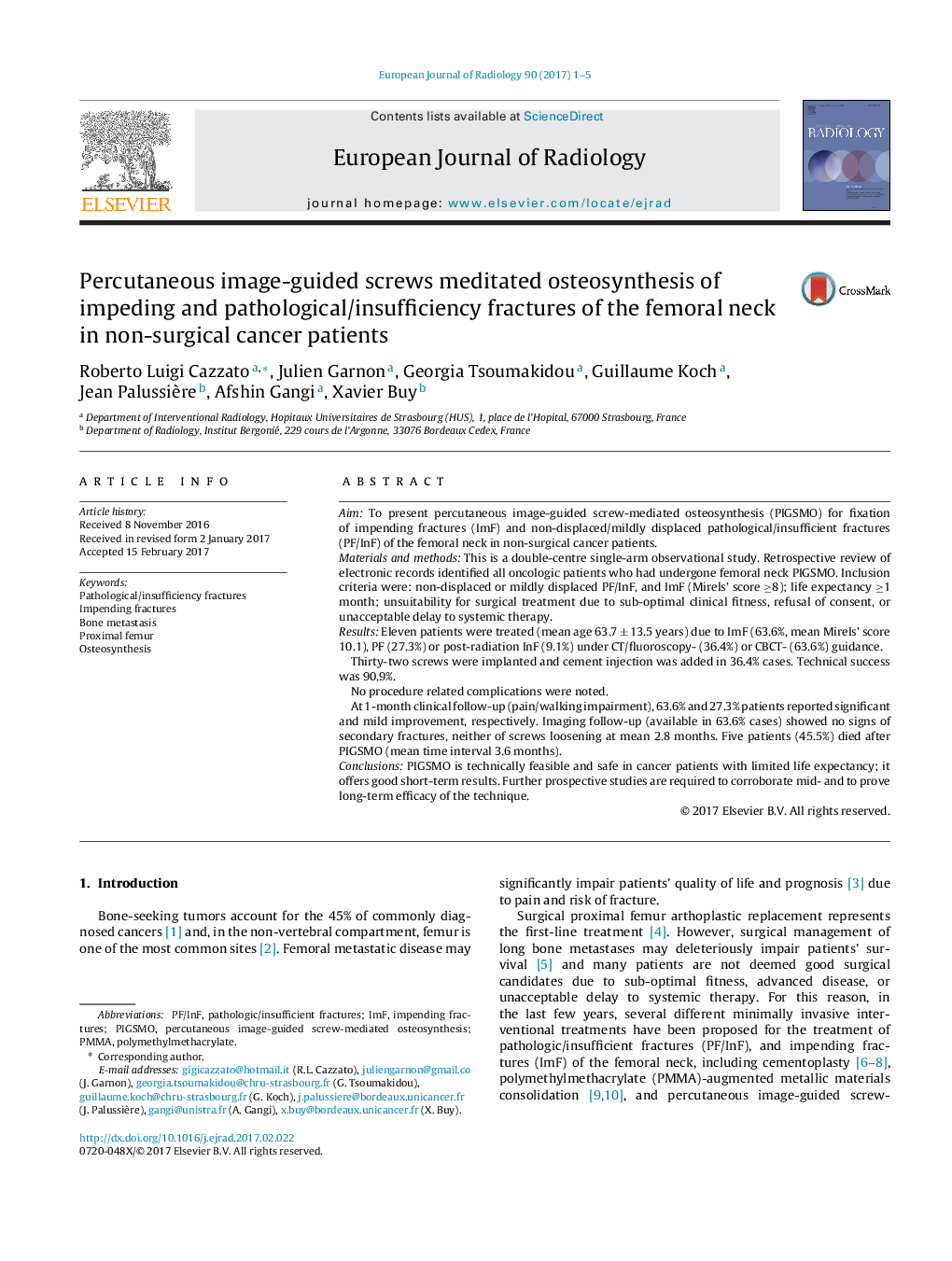| کد مقاله | کد نشریه | سال انتشار | مقاله انگلیسی | نسخه تمام متن |
|---|---|---|---|---|
| 5726340 | 1609730 | 2017 | 5 صفحه PDF | دانلود رایگان |
- Femoral metastatic disease impairs patients' quality of life and prognosis.
- Surgical management may deleteriously impair patients' survival.
- Several different minimally invasive interventional treatments have been proposed.
- Percutaneous image guided osteosynthesis has been reported with promising results.
AimTo present percutaneous image-guided screw-mediated osteosynthesis (PIGSMO) for fixation of impending fractures (ImF) and non-displaced/mildly displaced pathological/insufficient fractures (PF/InF) of the femoral neck in non-surgical cancer patients.Materials and methodsThis is a double-centre single-arm observational study. Retrospective review of electronic records identified all oncologic patients who had undergone femoral neck PIGSMO. Inclusion criteria were: non-displaced or mildly displaced PF/InF, and ImF (Mirels' score â¥8); life expectancy â¥1 month; unsuitability for surgical treatment due to sub-optimal clinical fitness, refusal of consent, or unacceptable delay to systemic therapy.ResultsEleven patients were treated (mean age 63.7 ± 13.5 years) due to ImF (63.6%, mean Mirels' score 10.1), PF (27.3%) or post-radiation InF (9.1%) under CT/fluoroscopy- (36.4%) or CBCT- (63.6%) guidance.Thirty-two screws were implanted and cement injection was added in 36.4% cases. Technical success was 90.9%.No procedure related complications were noted.At 1-month clinical follow-up (pain/walking impairment), 63.6% and 27.3% patients reported significant and mild improvement, respectively. Imaging follow-up (available in 63.6% cases) showed no signs of secondary fractures, neither of screws loosening at mean 2.8 months. Five patients (45.5%) died after PIGSMO (mean time interval 3.6 months).ConclusionsPIGSMO is technically feasible and safe in cancer patients with limited life expectancy; it offers good short-term results. Further prospective studies are required to corroborate mid- and to prove long-term efficacy of the technique.
Journal: European Journal of Radiology - Volume 90, May 2017, Pages 1-5
